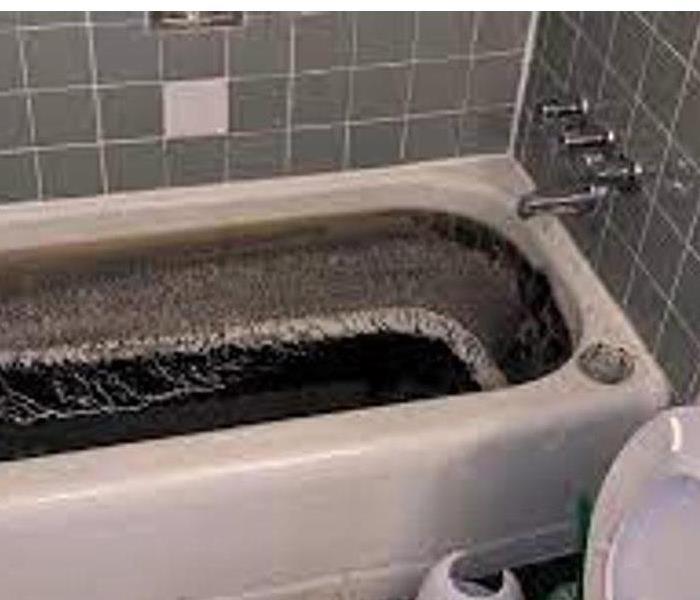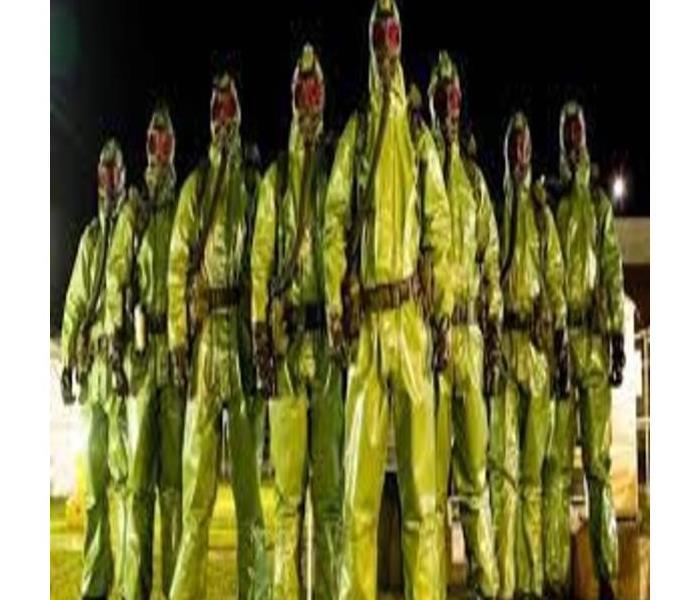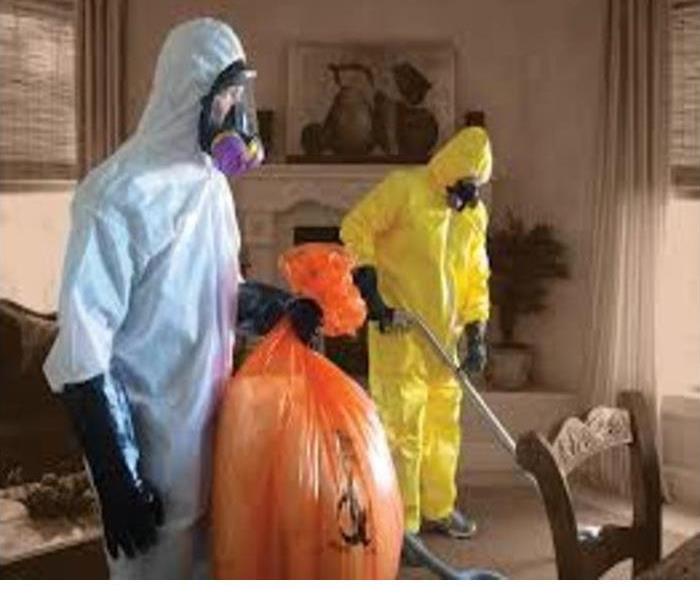Archived Biohazard Blog Posts
What are the 4 Types of Biological Hazards, in the Workplace?
7/3/2022 (Permalink)
 While most biohazards often come from bacteria, viruses, parasites, and molds or fungi, they are further grouped into 4 major types or categories.
While most biohazards often come from bacteria, viruses, parasites, and molds or fungi, they are further grouped into 4 major types or categories.
Also referred to as biohazards, biological hazards come from any biological substances that pose risks or threats to the health of living organisms (mostly humans and animals). In the workplace, some employees are exposed to a great number of biological agents. This highlights the employers’ responsibility to help educate workers about the various types of biological hazards, the risks associated with them, and how to proactively manage exposure through comprehensive risk assessment and management.
While most biohazards often come from bacteria, viruses, parasites, and molds or fungi, they are further grouped into 4 major types or categories.
Biological agents
Some biological hazard examples under this classification include bacteria, viruses, parasites, and fungi (such as yeasts and molds). These are commonly considered harmless if kept under control, while some may cause serious risks and diseases to animals or humans like the COVID-19 virus.
Biotoxins
These refer to a group of substances with a biological origin that is toxic and poisonous to humans. Often, biotoxins are produced by plants, bacteria, insects, or certain animals, among others. Continuous exposure to these may cause, at the very least, a series of inflammatory reactions throughout the body.
Blood and blood products
While blood isn’t considered a biological hazard, it can still bring potential risks if it’s contaminated or its source is in any way infected. Also, blood products such as red blood cells, white blood cells, plasma, tissues, and platelets are also hazardous if not properly handled.
Environmental specimens
Generally, these refer to plants, soil, or water that potentially contain the first two types of biological hazards—biological agents and biotoxins.
Biosafety Levels and Their Meaning
5/2/2022 (Permalink)
 When dealing with biohazards , you should understand the different levels.
When dealing with biohazards , you should understand the different levels.
Biosafety level 1 (BSL-1)
BSL-1 is the lowest security level for handling biological material. This kind of material poses no or only a low risk to healthy adult humans and presents minimal potential hazard to laboratory personnel and the environment. BSL-1 laboratories do not have to be separated from the rest of a building. Laboratory workers can do their work on open bench tops, and there is no need to use special equipment. Standard microbiology practices usually suffice to protect laboratory workers and other employees in the building. This means, for example, that no mouth pipetting is allowed and splashes and aerosol formation should be avoided. Spills have to be cleaned up immediately and all work surfaces should be decontaminated each time work is finished. Eating, drinking, and smoking are not allowed in the lab. To protect themselves, workers generally wear eye protection, gloves, and a lab coat. It is recommended that access to the laboratory be limited. In general, an autoclave is only required when working with genetically modified organisms or modified genetic elements (e.g., plasmid vectors). Biohazard signs are posted whenever infectious agents are present.
Examples of typical BSL-1 biological material
- Bacteria: Agrobacterium tumefaciens,Escherichia coli K-12, Pseudomonas fluoresces, Bacillus subtilis
- Viruses: canine adenovirus types 1 and 2, Bovine enterovirus
- Fungi: Saccharomyces cerevisiae
- Certain cell cultures> Endoparasites of animals and humans (e.g., some nematodes)
Biosafety level 2 (BSL-2)
All activities in a BSL-2 laboratory require higher security standards than in a BSL-1 laboratory. The biological material used in a BSL-2 laboratory consists of bacteria, viruses, and organisms associated with human diseases. The potential pathogenic or infectious organisms subject to BSL-2 standards pose a moderate hazard to healthy adult humans. However, because of their potential to cause human disease, great care must be taken to prevent percutaneous injury, and employees are subject to regular medical surveillance if necessary. The main difference in the work procedures followed in a BSL-1 laboratory and a BSL-2 laboratory is that employees in a BSL-2 laboratory will use a BSC as a primary barrier for potentially hazardous aerosols. These aerosols are generally formed during standard work procedures like mixing, pipetting, and centrifuging, so these activities should be carried out under a BSC. At a minimum, an autoclave has to be present in the lab as a second barrier. Windows open to the outside are not recommended. A sink for washing hands must be placed in direct proximity to the exit door. The laboratory should be easy to clean and decontaminate. Inside the laboratory, special lab coats, gloves, and face and eye protection should be worn. Special precaution must be taken with sharps that can cause injury. Access to BSL-2 laboratories must be restricted.
Examples of typical BSL-2 biological material
- Bacteria: Chlamydia pneumoniae, Enterobacter spp.,Mycoplasma pneumonia, Yersinia pseudotuberculosis
- Viruses: Herpes simplex virus, HIV (when performing routine diagnostic procedures or working with clinical specimens)
Biosafety level 3 (BSL-3)
BSL-3 involves handling indigenous or exotic agents that may cause serious or potentially lethal diseases through inhalation and/or pose a serious threat to the environment. Compared with the BSL-2 lab, BSL-3 labs require additional security precautions: Only limited access to the laboratory is allowed. Moreover, laboratory personnel remain under medical surveillance and are offered appropriate immunizations for the agents handled or potentially present in the laboratory. All laboratory waste has to be disinfected, and the clothes worn in the lab must be decontaminated before laundering. Walls, ceilings, and windows must be sealed, and floors must be nonskid and resistant to chemicals. The design, operational parameters, and procedures of a BSL-3 facility must be verified and documented prior to the start of operations. Facilities must be documented and verified again a minimum of once a year. In terms of a primary barrier, all open manipulations of biological material must be done under a BSC (preferably Class II or Class III) or in a closed containment system, and special protective clothing must be worn. BSL-3 laboratories must have separate exits with self-closing doors as the second barrier. Moreover, an air-ventilation system providing negative air flow is required that does not recirculate exhaust.
Examples of typical BSL-3 biological material
- Bacteria: Yersinia pestis, Brucella abortus, Chlamydia psittaci, Pseudomonas mallei
- Viruses: West Nile fever, herpes B, hepatitis A
Biosafety level 4 (BSL-4)
BSL-4 entails handling very dangerous and exotic biological material that may cause infection inside the laboratory as the result of aerosols. Other agents can have a very similar antigenic relationship to existing BSL-4 material, but there is insufficient data available to designate the level for these agents. Biological material also handled at this level relates to existing infectious material where the disease transmission is unknown. In addition to the precautions taken at the BSL-3 level, BSL-4 requires additional protection: All clothes must be changed before entering the lab, and employees must shower before leaving. In terms of primary barriers, all work has to be carried out in a Class III BSC or in a Class I or II BSC in combination with the lab worker wearing a full body, air-supplied positive pressure suit. A BSL-4 laboratory is usually located in a separate building or in a specific insolated area of a building; this isolation serves as a second barrier. This level also requires dedicated supply and exhaust ventilation equipment with vacuum and decontamination systems. Depending on the material and requirements, special installation might also be necessary.
Examples of typical BSL-4 biological material
- Ebola-Virus, Lassa-Virus, Marburg-Virus
Why Raw Sewage Cleanup is Not a DIY Project
7/9/2021 (Permalink)
 Once your home has been contaminated, raw sewage clean-up is a specialized process that doesn’t belong in the DIY category.
Once your home has been contaminated, raw sewage clean-up is a specialized process that doesn’t belong in the DIY category.
Raw sewage cleanup imposes all the complications of indoor water damage but adds substantial serious health hazards, as well. Sewage backflow into your house from a number of causes including a blockage in your own sewage line or a widespread problem in the municipal sewer system such as inundation due to flood water. Once your home has been contaminated, raw sewage clean-up is a specialized process that doesn’t belong in the DIY category. Here are some reasons why it’s a job for professionals with the knowledge, training, and specialized equipment to do the job competently and completely.
- Sewage is a toxic biohazard. Raw sewage contains harmful bacteria including fecal coliform and E.coli, viruses, and any and all other toxic substances including chemicals and poisons that may have gone into the municipal sewer system. Crews that specialize in raw sewage clean-up often look like any other toxic clean-up professional, fully clothed in resistant protective garb including eye shields and high-quality breathing protection designed specifically for the purpose. A pair of overalls and a dust mask from the hardware store are not sufficient equipment to ensure personal safety.
- Contamination is on the move. During clean-up, a major concern is limiting the spread of contamination. Specific precautions are required to prevent toxins present in sewage from migrating to other areas of the house, including sealing off the contaminated area and fully ventilating to the outdoors.
- Deep decontamination techniques are required. Just as water penetrates to the deepest recesses in a house, sewage does, too, along with the pathogens it contains. Simply mopping up or disinfecting surface evidence of raw sewage is not effective cleanup.
- DIY disinfectants may not be sufficient. The do-it-yourself disinfectant of choice—household bleach—may not always be the most effective option against infectious microorganisms found in sewage and/or may not provide lasting disinfection potency.
- Odor matters, too. The pungent, penetrating odor of raw sewage is difficult to clear from any enclosed structure. Special odor absorbents and high-volume ventilation equipment are usually required.
Protect Your Home or Business When it Comes to Biohazard Clean Up
5/11/2021 (Permalink)
 Protect Your Home or Business When it Comes to Biohazard Clean Up
Protect Your Home or Business When it Comes to Biohazard Clean Up
Protect your business’s reputation
Every business owner knows it takes extraordinarily little to damage a good reputation after working hard for years to build it up. With the possibility of rumors running rampant and passerby asking intrusive questions, we do our best to protect you, your staff, and customers from anything people might say after seeing a biohazard cleaning truck at your place of business here in Kendall County. With nothing around to advertise our presence, we work hard to keep a low profile while cleaning and removing biohazardous waste from your place of business.
At times, it can be beneficial for people to know the property has been fully cleaned by licensed biohazard cleaners after an event took place that was publicized in the news such as a shooting outside your store or an infectious disease outbreak. In many other cases, however, discretion and privacy is key to maintaining your reputation as a safe and clean business. At SERVPRO of Kendall County, we strive to help you in this however we can by not attracting unwanted attention so you can get back to regular business as quickly as possible.
Any quality biohazard cleaning business will always put your needs first. At SERVPRO of Kendall County, we work hard to take care of any biohazard problem you may be having. Whether it is in your private home, rental property, or business, we know how to help protect your reputation and your privacy so you can live in peace and safety for years to come.
Bio Hazard Cleanings in Kendall County
7/20/2020 (Permalink)
 When you're in need of bio-hazard clean up SERVPRO of Kendall County is your team.
When you're in need of bio-hazard clean up SERVPRO of Kendall County is your team.
Bio-hazard Cleanup Services
- Blood and Bodily Fluid Remediation
- Virus Decontamination and Protection
- Sewage Cleanup and Sanitation
- Crime Scene Cleanup
- Hoarding Cleanup
- Deodorization and Odor Control
Bio-hazard cleanup involves cleaning, sanitizing, and deodorizing areas where a traumatic event such as an accident, injury or death has occurred. Thus, dealing with bio-hazards often means dealing with blood, human or animal remains, chemical spills, and more. Keep in mind that the state is not responsible for cleaning up a crime scene. After police investigators collect evidence from the scene, it is up to the property owner to seek bio-hazard cleaning services. A professional cleanup team can arrive onsite only after the police have gathered enough evidence related to the crime.
When a bio-hazard occurs, call SERVPRO of Kendall County professionals to clean and disinfect the contaminated site. Our trained technicians use latest equipment and techniques to effectively remediate the damage.
The quality of our remediation services, the speed in which we deliver them, and the compassion we demonstrate throughout the process make SERVPRO of Kendall County your ideal damage restoration company. We strive to do whatever it takes to restore and rescue properties in all the communities we serve in Kendall county.
 While most biohazards often come from bacteria, viruses, parasites, and molds or fungi, they are further grouped into 4 major types or categories.
While most biohazards often come from bacteria, viruses, parasites, and molds or fungi, they are further grouped into 4 major types or categories.





 24/7 Emergency Service
24/7 Emergency Service



